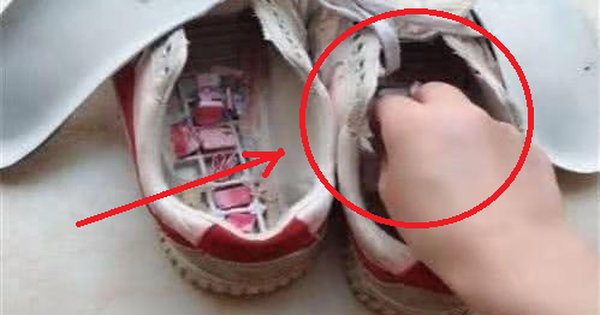The story of melting ice
Bringing home the catch is becoming an increasingly dangerous task in this Icelandic fishing village. While many people around the world are worried about sea level is increasing and swallowing the land, the community here has the opposite problem when the sea level is rising. reduced.
The marine lagoons surrounding the village of Höfn are becoming shallower and harder to navigate. The tide rises and falls with less force than before, causing the canals that help fishing boats to move through gradually being filled up.
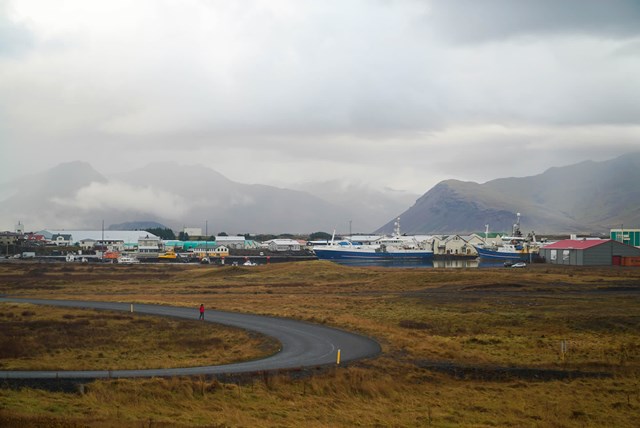
Boats docked in the village of Höfn, Iceland. Photo: CNN.
“The big ship when loaded with scallops or herring, the keel will be quite close to the bottom. Therefore, the high risk can lead to hull leakage, huge financial loss or even shipwreck,” said Þorvarður Árnason, director of the research center of the University of Iceland in Höfn. .
“There are usually about 60 men working on the train, all of them are locals,” said Árnason. “The thought of a shipwreck is so scary.”
The village of Höfn lies in the shadow of Iceland’s largest ice cap, Vatnajökull. For centuries, Vatnajökull’s immense weight had compacted the ground below. But global warming is causing these ice caps and glaciers to melt rapidly, now, faster than at any time in the past 200 years. As the ice sheets disappear, the ground is literally rising.
And when the glaciers melt, the waters return to the ocean. This will have two main consequences.
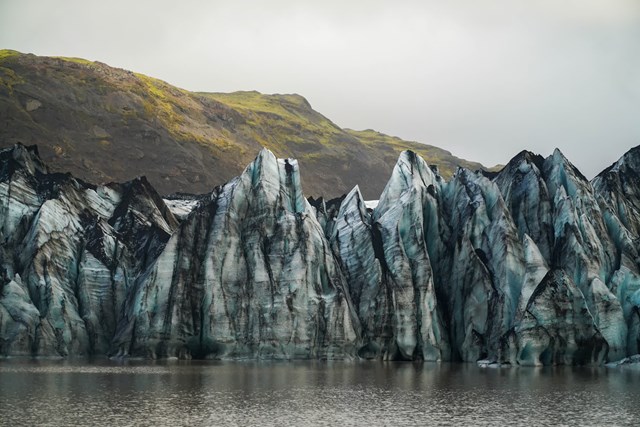
Front view of the Sólheimajökull glacier, on the south coast of Iceland. Photo: CNN.
For centuries, glaciers have compacted the ground below. This will make the ground lighter and relieve some of the pressure on the land below, causing the ground to rise again as the glaciers begin to melt.
Large glaciers also have a gravitational pull on the ocean as it pulls water toward them. So, as the glacier melts and loses mass, this pull becomes weaker and eventually causes the water to flow to the other side of the world.
Gravity
The origin of the name Iceland is no mystery as about one-tenth of the country is covered by glaciers. But at a time when the Arctic is experiencing the most dramatic increase in temperature in the world, as a result Iceland is now losing about 10 billion tons of ice a year, according to NASA. At this rate, Iceland will likely be ice-free by 2200.
GPS measurements have shown that the ground in the village of Höfn increases by 1.7 cm per year. The closer the land is to the melting glacier, the faster the increase. In an area about a 20-minute drive north of Höfn, the ground is recorded increasing by 3.8 centimeters per year.
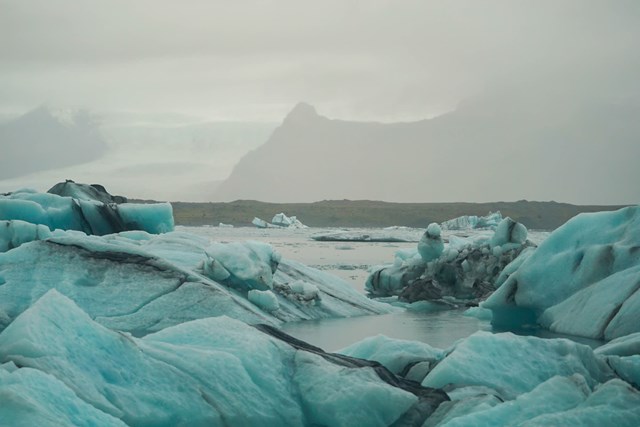
Ice melts in Iceland. Photo: CNN.
At Höfn, Director Árnason followed the developments directly. This village is associated with fishing and mostly the livelihood of the families here. If the boats can’t dock, it’s almost synonymous with poverty.
But there’s another reason sea levels around Iceland are falling, and that’s gravity.
The rapid melting of Greenland’s glaciers and ice sheets is causing sea levels to rise in most parts of the world, purely because they have added enormous amounts of water to the oceans.
But this increase is not uniform. In other words, Greenland and the surrounding territories, where the most thaw occurs, is actually experiencing a reduction in sea levels, and this isn’t just due to ground rise. .
Any object with mass has its own gravitational force. The greater the mass, the more gravitational force there is.
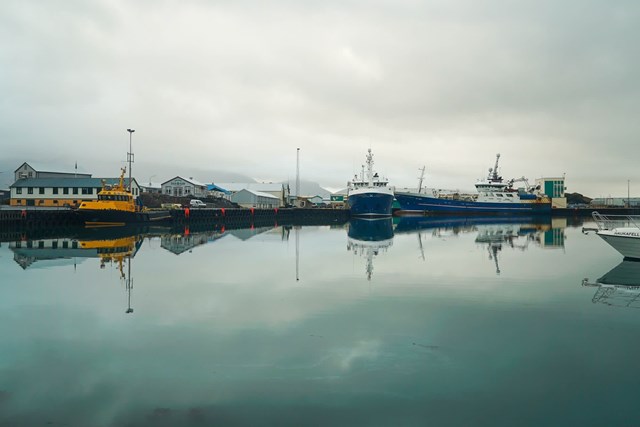
Vessels are docked at the village of Höfn. Photo: CNN.
“The ice is so heavy that it will be able to pull the ocean towards you by gravity. But if the ice melts, this attraction will start to weaken and push the water away,” said Thomas Frederikse, a researcher postdoctoral fellow at NASA’s Jet Propulsion Laboratory, stated. “The further away the iceberg is, the more water it will receive.”
NASA scientists estimate that, if the average global sea level rises by 1 meter – partly due to melting ice in Greenland – then this figure will actually decrease by 20 cm around Iceland. That’s because the country is located very close to Greenland, where the gravitational shift takes place.
And although melting for Iceland itself would play a role in global sea level rise, it holds only a tiny amount of water compared to the world’s largest icebergs.
If all the glaciers in Iceland were to melt, the global mean sea level would increase by 1 cm. On the other hand, Greenland and Antarctica have enough ice to send the planet to dire consequences. If all of Greenland were to melt, global sea levels would rise by 7.5 meters, and Antarctica has enough ice on the continent to raise sea levels by nearly 60 meters, if it all melts.
Effects of climate change
Melting ice accounts for about two-thirds of the world’s sea level rise. But climate change is affecting our oceans in a different way.
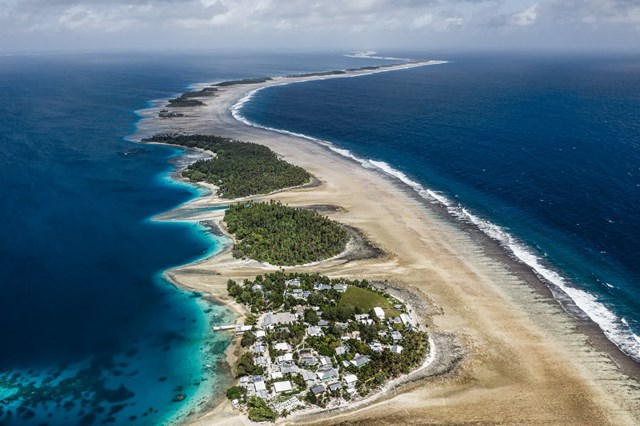
An aerial view of Ejit Island in the Marshall Islands’ Majuro Atoll. Photo: CNN.
As humans emit more greenhouse gases, mainly by burning fossil fuels such as coal, oil and natural gas for energy, the sea water temperature also gradually increases, while the The increased volume is causing the oceans to ‘expand’.
And as the water gets warmer, the molecules move faster and spread out more, directly increasing the volume. Scientists estimate that about a third of global sea level rise can be traced back to this expansion.
The latest scientific evidence shows that even if the world stops burning fossil fuels as it does now, sea level rise will still be limited until 2050. But future emissions will have consequences. larger results after 2050.
If the world warms by 3 to 4 degrees Celsius above pre-Industrial times, scientists warn that global average sea levels could rise by up to 70 centimeters by the end of this century, threatening the survival of the planet. human habitation in some areas. Currently, the temperature has increased by 1.2 degrees Celsius.
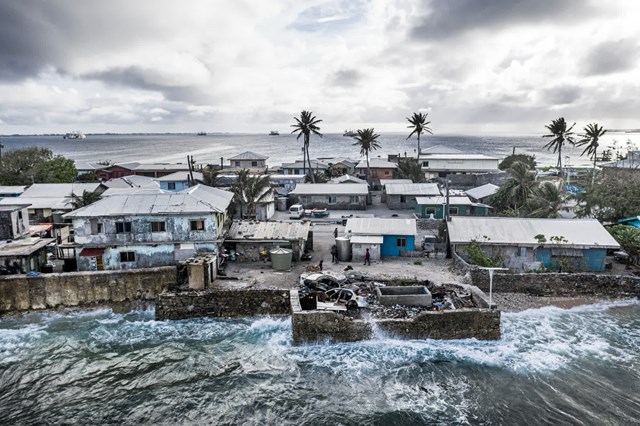
Waves crash against a sea wall in Majuro. Photo: CNN.
Iceland and global sea levels
As glaciers melt in Iceland, the impact on global sea levels has always been uneven. This melting would contribute to higher sea levels halfway around the world, such as in the Marshall Islands, rather than in the waters of Iceland.
As the fishermen of the village of Höfn grapple with the consequences of ‘agricultural’ seas, the people of the Marshall Islands have witnessed the rapid rise of sea levels around them.
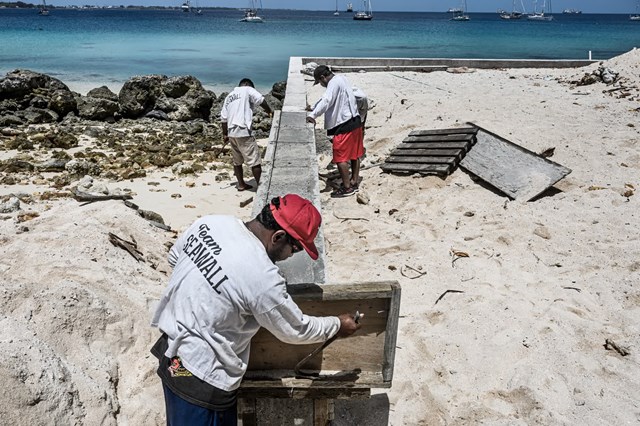
Workers build a sea wall in the Majuro Islands, Marshall. Photo: CNN.
The Marshalls are made up of 5 islands and 29 low-lying ring atolls. As the ice melts on the other side of the globe in places like Greenland and Iceland, the resulting sea level rise has forced people here to change the way they live and think about their future in a more existential way.
“Without mountains and oceans on either side, the land is really thin and narrow. The coastline is getting shorter and shorter,” said Kathy Jetn̄il-Kijiner, a writer and climate envoy for the Marshall Islands Department of Environment. On the contrary, it is a real threat to the existence of this land.”
The average altitude above sea level at Marshalls is only 2 meters. That’s why, here, every centimeter is very important.
Globally, the average sea level has increased by more than 20 cm since the beginning of the 20th century and has steadily increased over the past 3 decades. Since 1993, the water level has increased by an average of 2.8 to 3.6 mm. Meanwhile, the Marshalls suffered twice as much, with an increase of 7mm, according to an Australian government climate report.
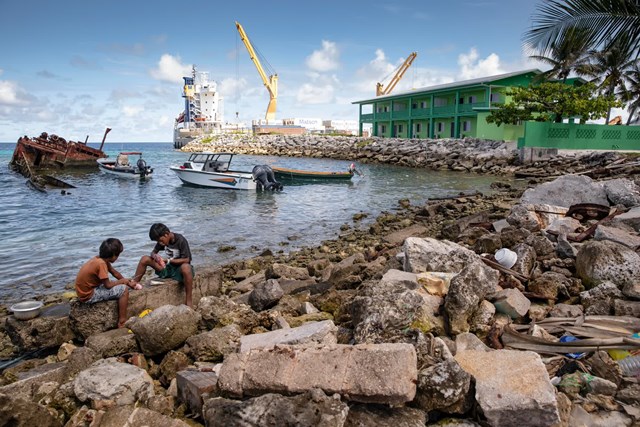
Children collect fish along the shoreline of Ebeye Island in the Kwajalein Atoll of the Marshall Islands. Photo: CNN.
Rising sea levels in this island nation are causing more frequent flooding. Waves wash away shorelines, streets are flooded, drinking water is contaminated, livelihoods are destroyed. The threat of flooding is always present in the minds of the people here.
It’s a constant reminder of the existential threat this country faces from climate change and that it needs new tools to adapt to reality.
at Blogtuan.info – Source: Soha.vn – Read the original article here

